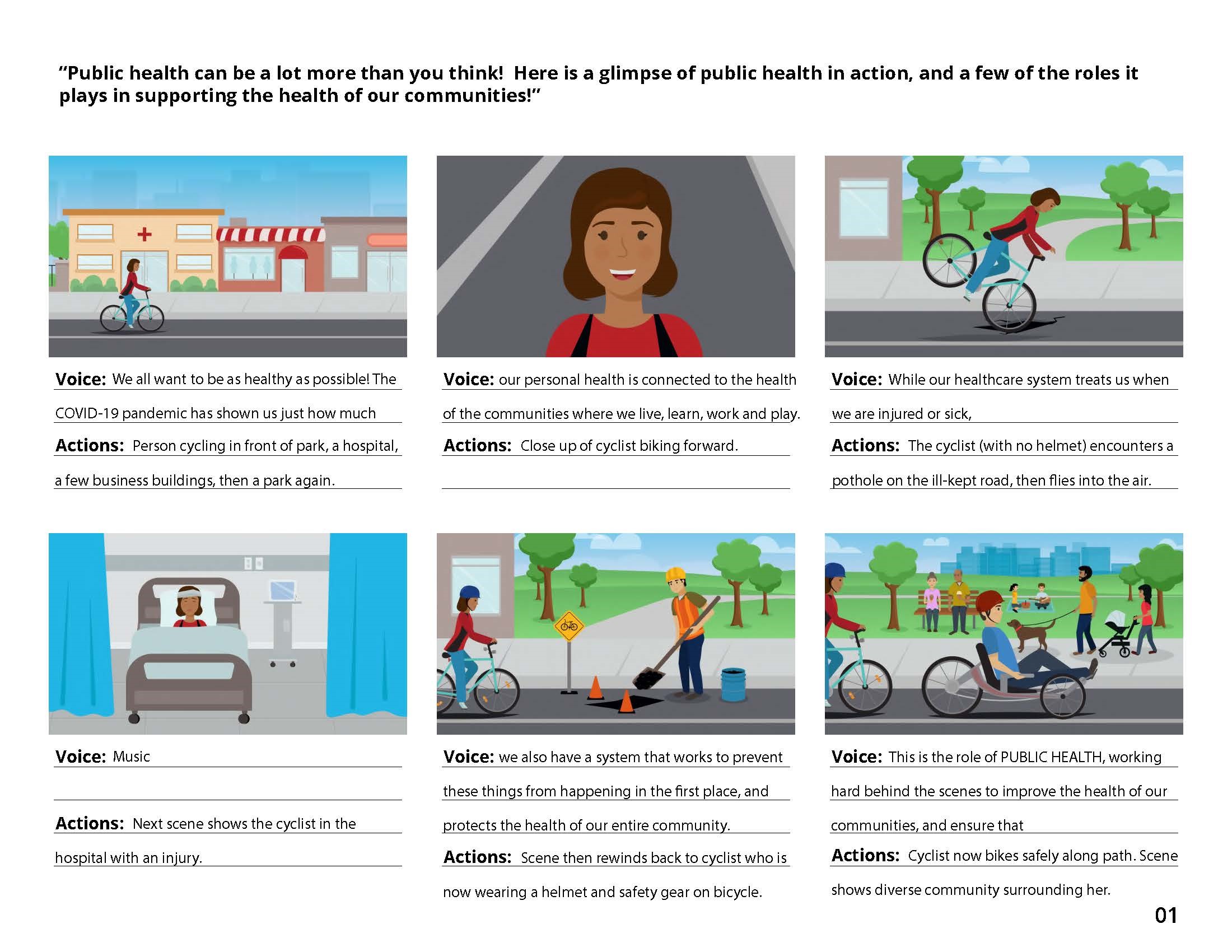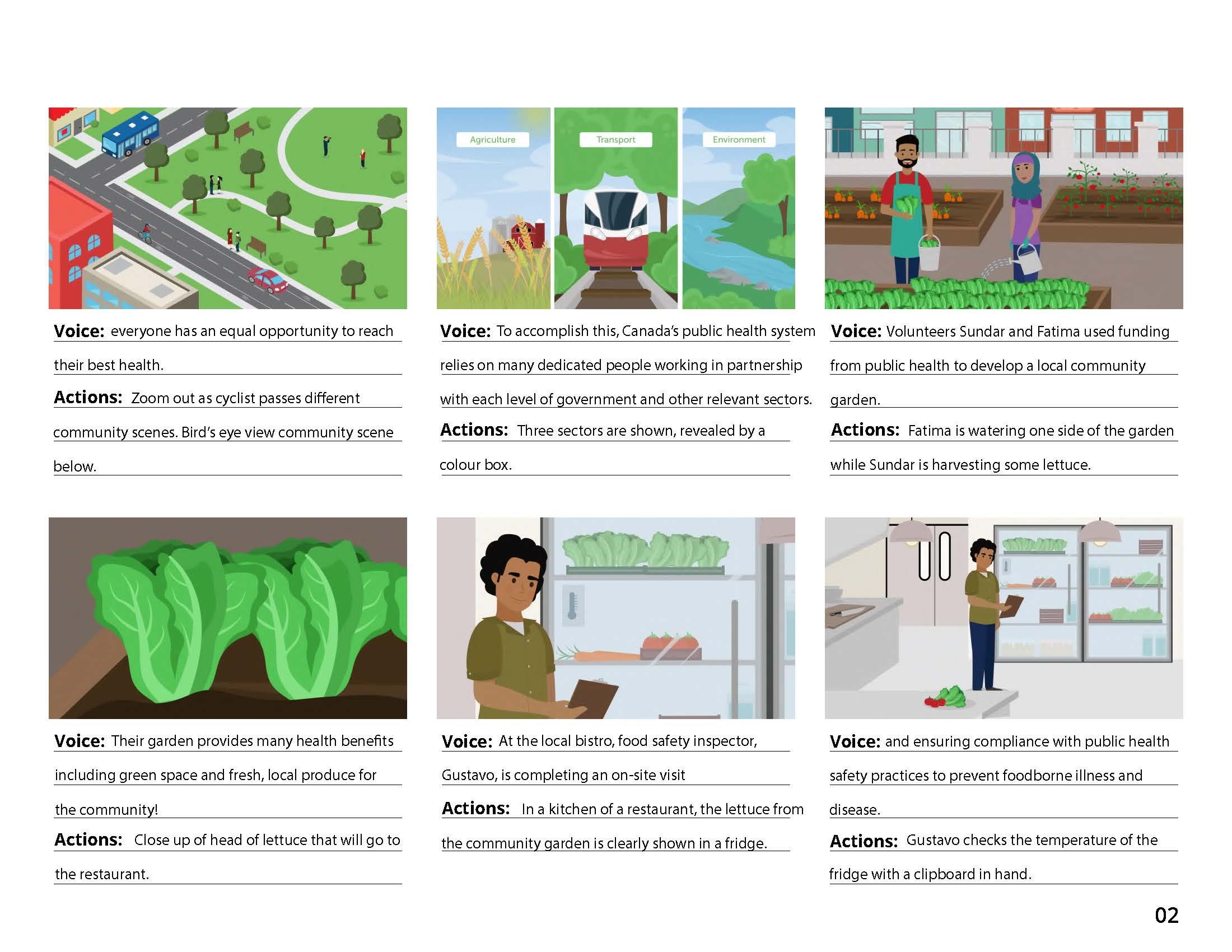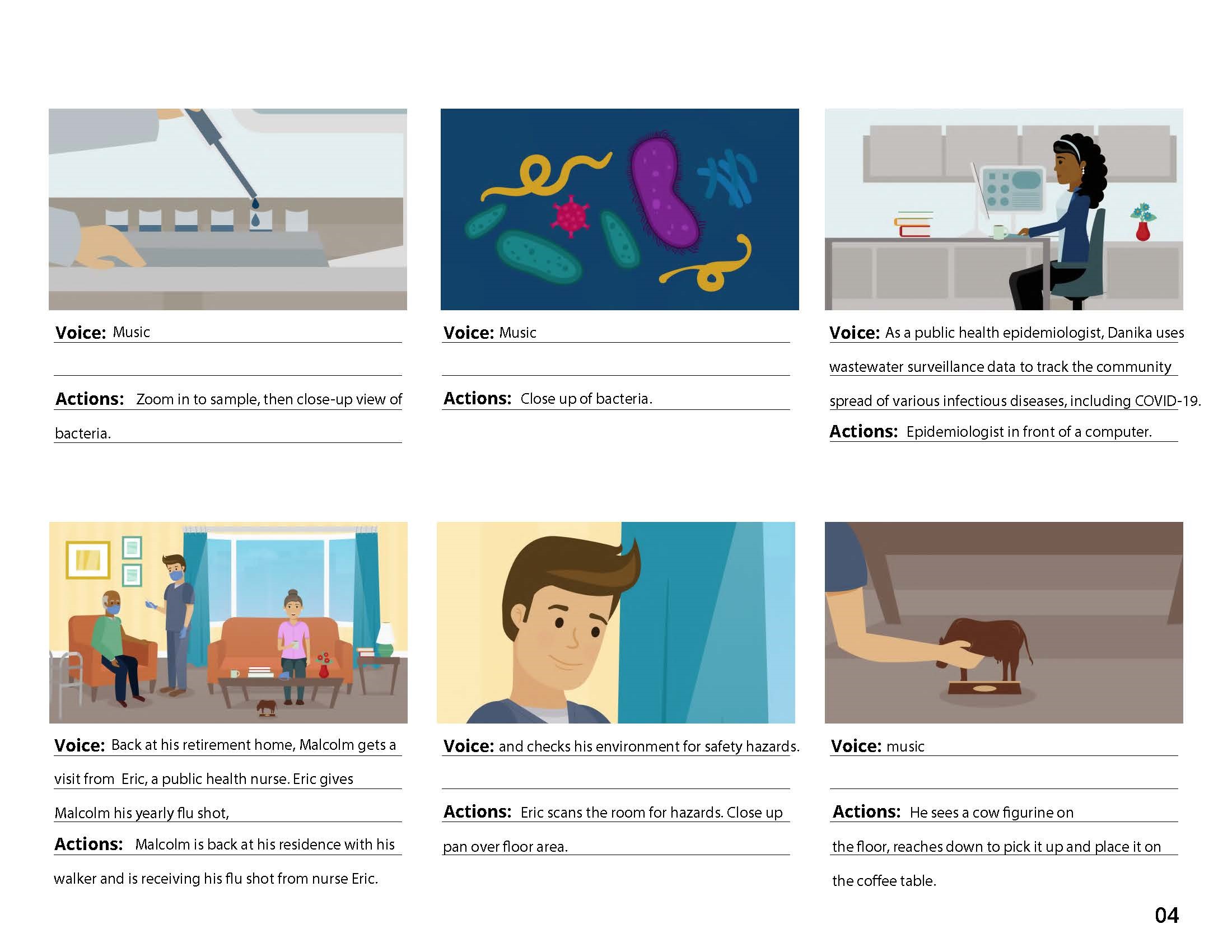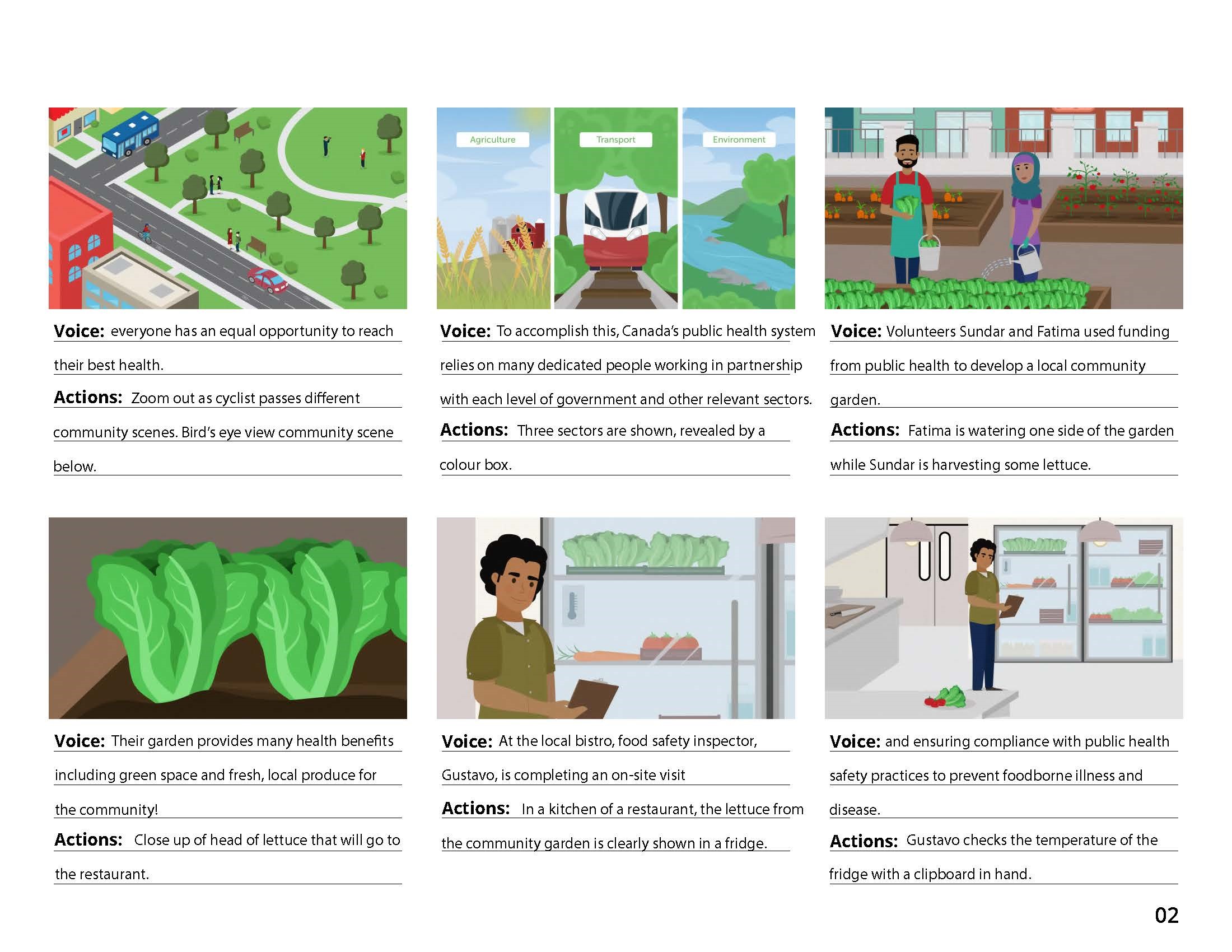



Target audience
| LOCATION | GROUP | LANGUAGE | DATE | TIME (EST) | GROUP COMPOSITION | NUMBER OF PARTICIPANTS |
|---|---|---|---|---|---|---|
| Rural Ontario | 1 | English | May 3 | 6:00-8:00 pm | General Population | 7 |
| Windsor – Ontario | 2 | English | May 4 | 6:00-8:00 pm | Disabled Persons | 7 |
| Mid-size Centres Prairies | 3 | English | May 5 | 8:00-10:00 pm | General Population | 7 |
| Quebec Eastern Townships | 4 | French | May 10 | 6:00-8:00 pm | Low-Income Workers | 6 |
| Calgary | 5 | English | May 11 | 8:00-10:00 pm | Heavy Social Media Users, aged 18-24 | 7 |
| Atlantic Canada | 6 | English | May 12 | 5:00-7:00 pm | General Population | 8 |
| Mid-size Centres Quebec | 7 | French | May 17 | 6:00-8:00 pm | Environmentally Concerned | 7 |
| Greater Vancouver Area (excl. City of Vancouver) | 8 | English | May 18 | 9:00-11:00 pm | Chinese Diaspora | 7 |
| Mid-size and Major Centres Manitoba | 9 | English | May 24 | 7:00-9:00 pm | Métis Nation | 7 |
| North/South Shore, (excl. Montreal) – Quebec | 10 | French | May 25 | 6:00-8:00 pm | General Population | 6 |
| City of Vancouver | 11 | English | May 26 | 9:00-11:00 pm | Renters | 7 |
| Northwest Territories | 12 | English | May 31 | 8:00-10:00 pm | General Population | 5 |
| Total number of participants | 81 | |||||





| GROUP | DATE | TIME (EDT) | TIME (LOCAL) | LOCATION | COMPOSITION | MODERATOR |
|---|---|---|---|---|---|---|
| 1 | Tues., May 3rd | 6:00-8:00 | 6:00-8:00 (EDT) | Rural Ontario | General Population | TBW |
| 2 | Wed., May 4th | 6:00-8:00 | 6:00-8:00 (EDT) | Windsor | Disabled Persons | DN |
| 3 | Thurs., May 5th | 8:00-10:00 | 6:00-8:00 (CST) 7:00-9:00 (CDT) |
Mid-size Centres Prairies | General Population | TBW |
| 5 | Wed., May 11th | 8:00-10:00 | 6:00-8:00 (MDT) | Calgary | Heavy Social Media Users, aged 18-24 | TBW |
| 6 | Thurs., May 12th | 5:00-7:00 | 6:00-8:00 (ADT) 6:30-8:30 (NDT) |
Atlantic Canada | General Population | DN |
| 8 | Wed., May 18th | 9:00-11:00 | 6:00-8:00 (PDT) | Greater Vancouver Area (excluding City of Vancouver) | Chinese Diaspora | DN |
| 9 | Tues., May 24th | 7:00-9:00 | 6:00-8:00 (CDT) | Mid-size and Major Centres Manitoba | Métis Nation | DN |
| 11 | Thurs., May 26th | 9:00-11:00 | 6:00-8:00 (PDT) | City of Vancouver | Renters | DN |
| 12 | Tues., May 31st | 8:00-10:00 | 6:00-8:00 (MDT) | Northwest Territories | General Population | TBW |
| LOCATION | CITIES | |
|---|---|---|
| Rural Ontario | Population = <30,000 Cities could include (but are not limited to): Innisfil, Timmins, Keswick-Elmhurst Beach, Bolton, Midland, Alliston, Fergus, Collingwood, Lindsay, Owen Sound, Brockville, Wasaga Beach, Cobourg, Tillsonburg, Valley East, Pembroke, Simcoe, Strathroy, Port Colborne, Fort Erie, Amherstburg. MAX 2 PARTICIPANTS FROM EACH CITY. ENSURE A GOOD MIX ACROSS THE REGION. |
CONTINUE - GROUP 1 |
| Windsor | City includes: Windsor. PARTICIPANTS SHOULD RESIDE IN THE ABOVE-NOTED CENTER PROPER. |
CONTINUE - GROUP 2 |
| Mid-size Centres Prairies | Cities include: Manitoba: Brandon, Steinbach, Winkler, Portage la Prairie, Thompson. Saskatchewan: Prince Albert, Moose Jaw. ENSURE 4 PARTICIPANTS FROM EACH PROVINCE. NO MORE THAN TWO FROM EACH CITY. ENSURE A GOOD MIX OF CITIES ACROSS THE REGION. |
CONTINUE - GROUP 3 |
| Calgary | City includes: Calgary. PARTICIPANTS SHOULD RESIDE IN THE ABOVE-NOTED CENTER PROPER. |
CONTINUE - GROUP 5 |
| Atlantic Canada | Cities could include (but are not limited to): NS: Halifax, Dartmouth, Cape Breton-Sydney. NB: Moncton, Saint John, Fredericton, Dieppe, Miramichi, Edmundston. PEI: Charlottetown, Summerside. N&L: St. John’s, Conception Bay, Mount Pearl, Corner Brook. ENSURE 2 PARTICIPANTS FROM EACH PROVINCE. ENSURE A GOOD MIX OF CITIES WITHIN EACH PROVINCE. INCLUDE THOSE RESIDING IN LARGER AND SMALLER COMMUNITIES. NO MORE THAN 1 PER CITY. |
CONTINUE - GROUP 6 |
| Greater Vancouver Area (excluding City of Vancouver) | Cities could include (but are not limited to): West and North Vancouver, Burnaby, Richmond, Surrey, White Rock, Coquitlam, Delta, Langley, Maple Ridge, New Westminster, Pitt Meadows, Port Moody.
ENSURE A GOOD MIX OF CITIES ACROSS THE REGION. NO MORE THAN TWO PER CITY. |
CONTINUE - GROUP 8 |
| Mid-size and Major Centres Manitoba | Cities include (but are not limited to): Winnipeg, Portage la Prairie, Brandon, Steinbach, Thompson, Winkler, Selkirk, Morden, Dauphin, The Pas, Flin Flon.
NO MORE THAN FOUR FROM WINNIPEG. NO MORE THAN TWO PER OTHER CITY. ENSURE A GOOD MIX ACROSS THE REGION. |
CONTINUE - GROUP 9 |
| City of Vancouver | City includes: City of Vancouver. PARTICIPANTS SHOULD RESIDE IN THE ABOVE-NOTED CENTER PROPER. |
CONTINUE - GROUP 11 |
| Northwest Territories | Cities include (but not limited to): Yellowknife, Hay River, Inuvik, Fort Smith. ENSURE A GOOD MIX OF CITIES ACROSS THE REGION. INCLUDE THOSE RESIDING IN LARGER AND SMALLER COMMUNITIES. |
CONTINUE - GROUP 12 |
| Less than two years | THANK AND END |
|---|---|
| Two years or more | CONTINUE |
| Don’t know/Prefer not to answer | THANK AND END |
| Less than 5 years | CONTINUE – GROUP 8 |
|---|---|
| 5 to <10 years | |
| 10 to <20 years | |
| 20 to <30 years | |
| 30 or more years | |
| Don’t know/Prefer not to answer | THANK AND END |
| Under 18 years of age | IF POSSIBLE, ASK FOR SOMEONE OVER 18 AND REINTRODUCE. OTHERWISE THANK AND END. |
|---|---|
| 18 – 24 | IF CALGARY = GROUP 5 ALL OTHER LOCATIONS, CONTINUE |
| 25 – 34 | IF CALGARY = THANK AND END ALL OTHER LOCATIONS, CONTINUE |
| 35 – 44 | IF CALGARY = THANK AND END ALL OTHER LOCATIONS, CONTINUE |
| 45 – 54 | IF CALGARY = THANK AND END ALL OTHER LOCATIONS, CONTINUE |
| 55+ | IF CALGARY = THANK AND END ALL OTHER LOCATIONS, CONTINUE |
| VOLUNTEERED Prefer not to answer |
THANK AND END |
| Male | CONTINUE |
|---|---|
| Female | CONTINUE |
| GROUPE | DATE | HEURE (HAE) | HEURE (LOCALE) | LIEU | COMPOSITION DU GROUPE | MODÉRATEUR |
|---|---|---|---|---|---|---|
| 4 | 10 mai | 18 h-20 h | 18 h-20 h | Cantons de l’Est (Québec) | Travailleurs à faible revenu | M. Proulx |
| 7 | 17 mai | 18 h-20 h | 18 h-20 h | Villes de taille moyenne du Québec | Soucieux de l’environnement | M. Proulx |
| 11 | 25 mai | 18 h-20 h | 18 h-20 h | Rive-Nord/Rive-Sud – excluant la ville de Montréal | Population générale | M. Proulx |
| LIEU | VILLES | |
|---|---|---|
| Cantons de l’Est (Québec) | Ces villes peuvent notamment comprendre : Sherbrooke, Granby, Magog, Cowansville, Drummondville, Victoriaville, Thetford Mines, Saint-Jean-sur-Richelieu, Lac-Mégantic ASSURER UNE BONNE REPRÉSENTATION DES VILLES DANS CHAQUE LIEU. PAS PLUS DE DEUX PARTICIPANTS PAR VILLE. |
CONTINUER - GROUPE 4 |
| Villes de taille moyenne du Québec | Ces villes peuvent notamment comprendre : Saint-Jean-sur-Richelieu, Saint-Jérôme, Chateauguay, Drummondville, Granby, Beloeil, Saint-Hyacinthe
ASSURER UNE BONNE REPRÉSENTATION DES VILLES DE LA RÉGION. PAS PLUS DE DEUX PARTICIPANTS PAR VILLE. |
CONTINUER - GROUPE 7 |
| Rive-Nord/Rive-Sud – excluant la ville de Montréal | Ces villes peuvent notamment comprendre : Rive-Nord : Blainville, Bois-des-Filion, Boisbriand, Charlemagne, l’Assomption, Mascouche. Rive-Sud : Boucherville, Varennes, Sainte-Julie, Beloeil, Chambly, Longueuil, Brossard, Saint-Hubert, Candiac. ASSURER UNE BONNE REPRÉSENTATION DES VILLES DANS CHAQUE LIEU. PAS PLUS DE DEUX PARTICIPANTS PAR VILLE. |
CONTINUER - GROUPE 11 |
| Autre lieu | - | REMERCIER ET CONCLURE |
| RÉPONSE SPONTANÉE Préfère ne pas répondre | - | REMERCIER ET CONCLURE |
| Moins de deux ans | REMERCIER ET CONCLURE |
|---|---|
| Deux ans ou plus | CONTINUER |
| Ne sais pas/Préfère ne pas répondre | REMERCIER ET CONCLURE |
| Moins de 18 ans | SI POSSIBLE, DEMANDER À PARLER À UNE PERSONNE DE 18 ANS OU PLUS ET REFAIRE L’INTRODUCTION. SINON, REMERCIER ET CONCLURE. |
|---|---|
| 18 à 24 | CONTINUER ASSURER UNE BONNE REPRÉSENTATION DES ÂGES DANS CHAQUE GROUPE. |
| 25 à 34 | |
| 35 à 44 | |
| 45 à 54 | |
| 55 ans ou plus | |
| RÉPONSE SPONTANÉE préfère ne pas répondre | REMERCIER ET CONCLURE |





Above is a storyboard featuring 30 animated panels from a public health advertising campaign. (1): We see a person cycling in front of a park, hospital, a few business buildings, and then a park again. VO: We all want to be as healthy as possible! The COVID-19 pandemic has shown us just how much. (2): We see a close-up of the cyclist biking forward. VO: our personal health is connected to the health of the communities where we live, learn, work and play. (3): The cyclist (with no helmet) encounters a pothole on the ill-kept road, then flies into the air. VO: While our healthcare system treats us when we are injured or sick. (4): We next see the cyclist in bed in the hospital with an injury, music accompanies. (5): Scene then rewinds back to cyclist who we see is now wearing a helmet and safety gear while riding their bicycle. VO: we also have a system that works to prevent these things from happening in the first place, and protects the health of our entire community. (6): Cyclist now bikes safely along path. The shows a diverse community in the area she is biking through. VO: This is the role of PUBLIC HEALTH, working hard behind the scenes to improve the health of our communities, and ensure that – (7): We zoom out as the cyclist bikes throughout her community. We see a bird’s eye view of the community below. VO: - everyone has an equal opportunity to reach their best health. (8): Three sectors (Agriculture, Transport, and Environment) are shown, revealed by a colour box. VO: To accomplish this, Canada’s public health system relies on many dedicated people working in partnership with each level of government and other relevant sectors. (9): A woman (Fatima) is watering one side of the garden while a man (Sundar) is harvesting some lettuce. VO: Volunteers Sundar and Fatima used funding from public health to develop a local community garden. (10): We see a close-up of a head of lettuce that will go to a restaurant. VO: Their garden provides many health benefits including green space and fresh, local produce for their community! (11): We now see a kitchen in a restaurant, the lettuce from the community garden is clearly shown in a fridge. We see a man with a clipboard looking at it VO: At the local bistro, food safety inspector, Gustavo, is completing an on-site visit. (12): Gustavo checks the temperature of the fridge with a clipboard in hand. VO: - and ensuring compliance with public health safety practices to prevent foodborne illness and disease. (13): As music plays, we see a close-up on lettuce and the background disappears. Lettuce turns into a nicely made salad. (14): The scene pans out and we see a man, Malcolm, about to eat the salad. VO: Enjoy your salad Malcolm! (15): We next see a view of two public toilet doors. Malcolm walks into the view. VO: Did you know that going to the washroom can also be informative for public health? (16): We pan down to reveal piping and then pan right. Music continues. (17): The scene fades into a wastewater facility. (18): We transition into the treatment facility and see a lab technician looking at samples VO: Wastewater surveillance involves the sampling and analysis of sewage to monitor community health threats. (19): We zoom-in to the sample for a close-up look of the bacteria. (20): Close-up look of the bacteria. (21): We see an epidemiologist in front of a computer. VO: As a public health epidemiologist, Danika uses wastewater surveillance data to track the community spread of various infectious diseases, including COVID-19. (22): Malcolm is back at his residence with his walker and is receiving his flu shot from nurse Eric. VO: Back at his retirement home, Malcolm gets a visit from Eric, a public health nurse. Eric gives Malcolm his yearly flu shot. (23): Eric scans the room for hazards. We see a close-up pan over the floor area. VO: - and checks for safety hazards. (24): Eric sees a cow figurine on the floor, reaches down to pick it up and places it on the coffee table. (25): We zoom in on the cow figurine which is now on the coffee table. (26): We then fade from the previous scene and see a cow grazing in a field. VO: Kilometres away, public health veterinarian Olivia is helping to keep our food supply safe. (27): We pan out to reveal a picturesque farm along with a red barn. We zoom into the barn. (28): Olivia is chatting with farmer Rick, going over a document on her clipboard. VO: Olivia works to ensure responsible use of antimicrobials, or antibiotics, which help to reduce the spread of resistant bacteria and to prevent disease in animals and humans. (29): We fade and then see all of the different examples (left to right: Sundar the gardener, Olivia the farm inspector, the wastewater surveillance technician, Gustavo the food safety inspector, and Eric, the public health nurse). VO: These are just a few examples of public health in action in Canada! (30): We close on the public health logo before transitioning to the Government of Canada wordmark.